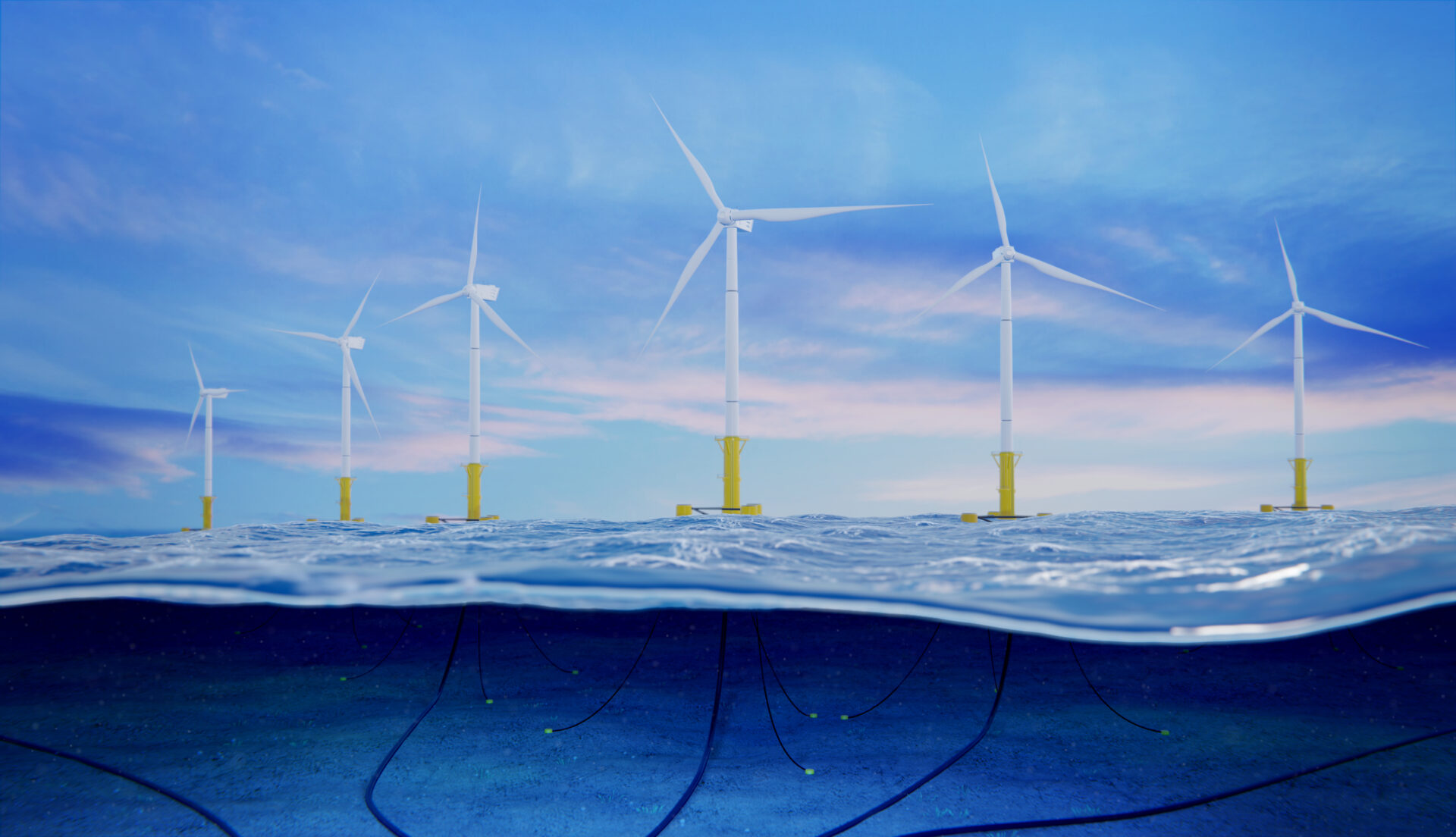This means that the industry knowledge required to install these projects is restricted to a few individuals – and no-one has experience of building floating wind farms at scale (the largest fully installed site to date being Hywind Tampen with 11 turbines). France is currently the biggest player installing floating offshore wind, including Les éoliennes flottantes du Golfe du Lion (EFGL) which was modeled using Shoreline Design.
This article highlights the main challenges in floating wind transport, assembly and installation projects and demonstrates how these challenges can be modeled in the Shoreline Design planning and simulation tool.
Assembling floating wind technology at port
A major challenge is assembling the floaters themselves. The multiplicity of designs available on the market make having a universal assembly methodology challenging, but in general there are three types of design which are gaining most traction in the market: the semi-submersible, the barge and the spar. These can be manufactured in steel or concrete, and there are various options to be considered, including whether a design which is welded or screwed together makes most sense in the assembly location(s). The biggest challenge is of course the size of the foundations: there are few ports globally which can support the assembly of more than 3 floating foundations concurrently. This means that developers and foundation manufacturers need to consider assembling floater components in multiple ports simultaneously prior to transport to marshalling port for final assembly, or to have very efficient streamlined assembly lines for floaters which are fully assembled in the marshalling port.
Using the Shoreline Design software users are able to model exactly how long each assembly task is likely to take, the weather windows at port required to perform useful work, and model the weather which will restrict operations. Simulating against historical weather data allows users to build up a reasonable picture of how long each assembly task will likely take, and exactly which weather is likely to be a blocker to progress:
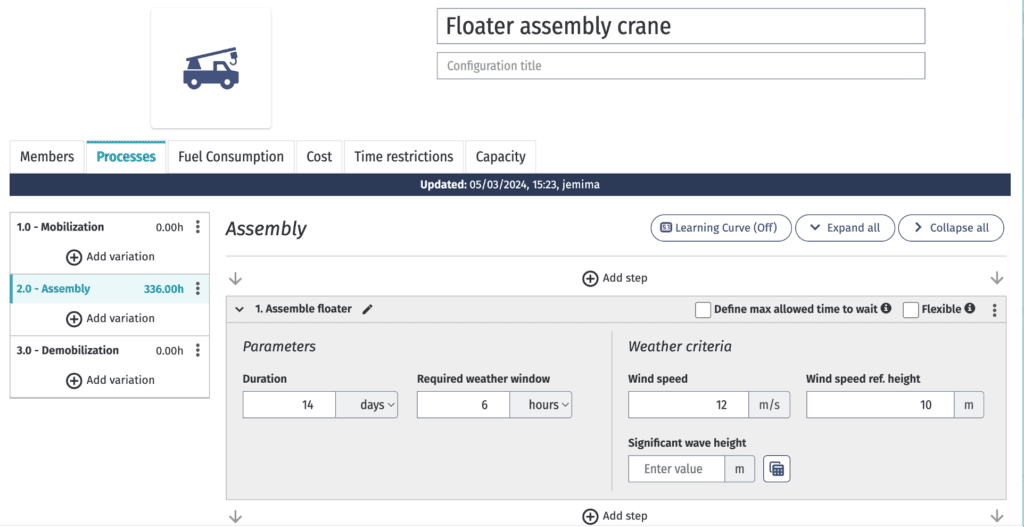
Challenges of integrating floating turbines
Transporting, storing and assembling the wind turbine (WTG) components for an offshore wind project has never been straightforward due to the scale of the components in question. Typically all components are transported to the marshalling port, the tower components assembled into a single tower, and then all the components for one or more turbines are loaded directly onto an installation or feeder vessel ready for installation. Floating projects require a slightly different approach, since by definition it won’t be possible to jack up a vessel at the wind farm to install the towers, nacelle and blades onto the foundation. This work takes place at port instead, with the tower components typically being assembled one at a time on top of the floating foundation, which may be positioned on the quayside, in dry dock or already in the sea at quayside. Installing onto a floating object can be challenging due to the horizontal and vertical movement and roll and pitch of the floaters even when performed in the relative ease of a sheltered harbour environment.
The nacelle and blades are also typically installed in port and then the entire floating unit is towed out to the wind farm location. All the complexity of this operation can be modelled in the Shoreline Design tool and the results simulated to generate estimated task and project completion dates.
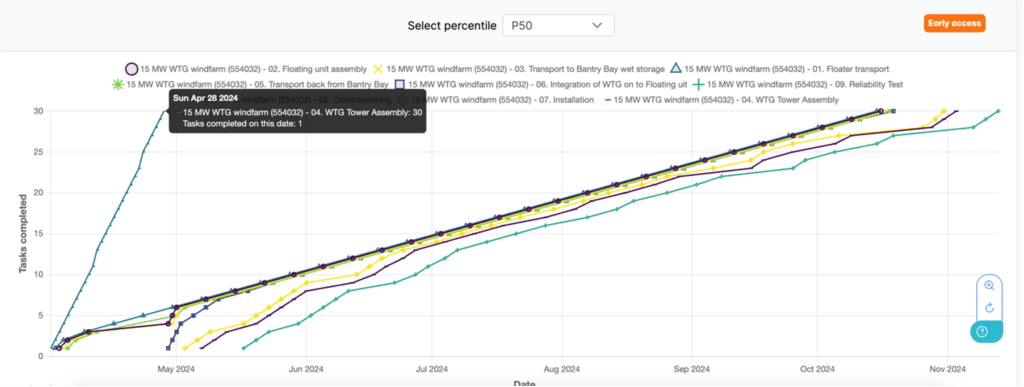

There are few floater-ready ports available worldwide, but the following are key things to consider when choosing a port:
- Is there sufficient hinterland to store and manoeuvre floater and WTG components, and completed floating foundations?
- Is there sufficient quayside for all activities? Consider floater assembly, tower assembly, space to receive floater and WTG components, perform M&E completion and testing, and eventually launch the assembled floating units. This is particularly key since there are no ports which could store all the floating foundations for a medium – large scale project.
- Does the quayside have sufficient load-bearing capacity to support the activities – e.g. to support the crane and the floating components or fully assembled floating WTG?
- Are there sufficient water depths at quayside and along the route in/out of port to store and deploy the partially or fully assembled floating foundations or floating turbines?
The Shoreline Design software allows users to itemise exactly how much space is required at each port for each component type and to itemise how long each assembly task should take. This makes it easy to estimate how long floater and WTG assembly will take and exactly which flow of components in and out of port is optimal for the most cost-effective operation:
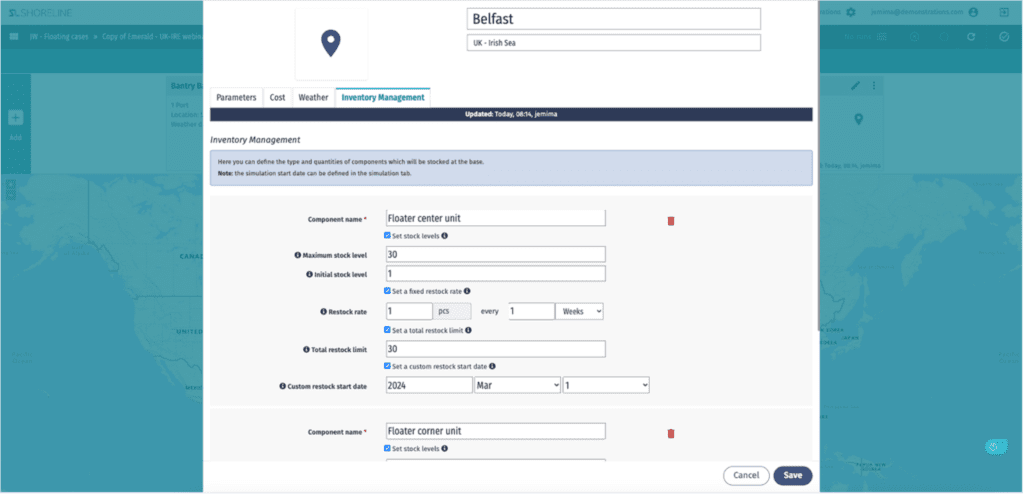
Wet storage offshore wind
Wet storage will be a key requirement for the installation of medium to large scale floating projects, due to the lack of suitable space at port. Developers may wish to consider storing floating components or completed floaters in wet storage on the way into port, once manufactured, and even once the WTGs have been assembled on top of them. The following criteria should be considered when identifying locations for storing floating units:
- A designated sheltered area
- Good water depths
- Limited traffic
- Close to shore
Shoreline Design allows users to model wet storage in whichever location seems most sensible for their project, and to put capacities on it so only the appropriate number of floating foundations can be stored there concurrently.
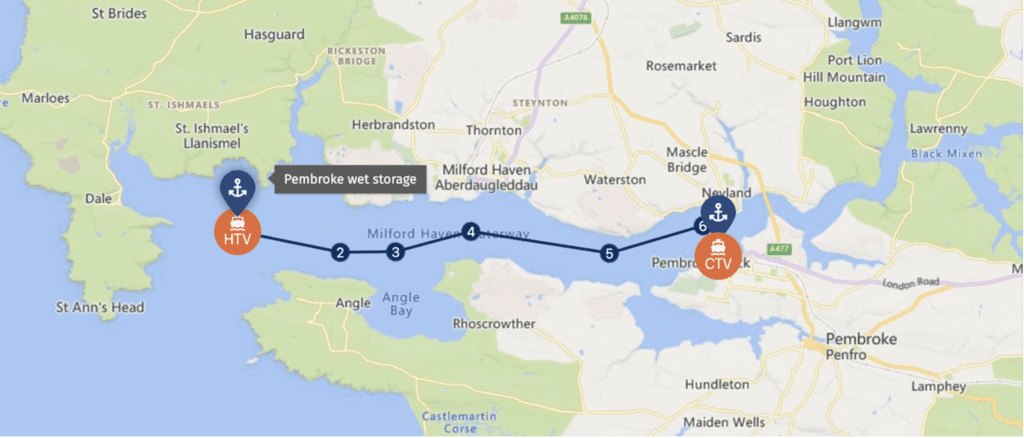
There are clearly a lot of moving parts to consider in floating offshore wind installation projects. We are pleased that the leading developer/operators and OEMs are already modeling the complexity of these operations in Shoreline Design in increasing numbers. To find out more about how Shoreline Design could help you….
